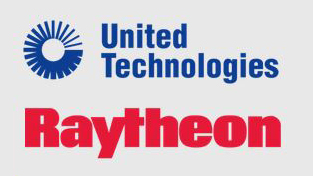
In what is set to be the largest merger of the decade, Raytheon and United Technologies Corp (UTC) are steadily moving toward their goal, capping a period of dramatic M&A activity among aerospace and defense primes.
The proposed “merger of equals” will blend Raytheon’s defense expertise with UTC’s commercial aerospace operations. Because their is little overlap in the two companies’ product lines, the new Raytheon Technologies Corporation will be a diversified aerospace and defense conglomerate with products that range from missile defense to airline seating.
One motivation behind the merger is that contractors are being squeezed to lower costs, in both commercial and military markets. Industry primes such as Airbus and Boeing continue to push suppliers to cut costs, which drove UTC to acquire Rockwell Collins and form the new Collins Aerospace just last year. At the same time, cost pressure is a notable constant in contracting with the Pentagon. By combining operations, the new company is looking to gain efficiencies of scale in its own operations to meet lower cost targets. Further, the diversification follows the old conglomerate model upon which UTC was based – when one market is down, hopefully the other is up, providing resiliency across business cycles.
Once complete, Raytheon Technologies will consist of four businesses – the defense-oriented Intelligence, Space & Airborne Systems and Integrated Defense & Missile Systems, and the commercial aerospace facing Collins Aerospace and Pratt & Whitney.
The aerospace and defense model is one that Boeing has successfully followed for years. Not only does the diversification help balance out its offerings, but the technology transfers between operations also provide substantial product development advantages.
The new company will generate approximately $74 billion in annual revenue, putting it behind Lockheed Martin in terms of defense contracting. Raytheon Technologies will be the world’s second largest aerospace and defense conglomerate after Boeing, with revenue roughly split between the two markets.
Complementary research and development is one area the two firms tout as a major benefit to the combination. With some 60,000 engineers and combined annual company- and customer-funded R&D spending of approximately $8 billion, Raytheon Technologies will have the scale and funding to develop new technologies faster and more efficiently. The companies said that initial areas of joint interest include hypersonics and future missile systems; directed energy weapons; intelligence, surveillance, and reconnaissance (ISR) in contested environments; cyber protection for connected aircraft; next-generation connected airspace; and advanced analytics and artificial intelligence for commercial aviation.
That said, some have questioned the merger of two disparate firms. One of UTC’s largest shareholders has slammed the deal, believing that it introduces unnecessary risk at a time when UTC needs to focus on divesting its commercial operations. The fear is that such a large merger will lead to poor execution as management focus is spread too thin.
The merger caps off an active period in major defense consolidation. In addition to UTC’s $30 billion Rockwell Collins buy, Harris (which also bought Exelis) and L3 just consummated their merger. Prior to that, Northrop Grumman absorbed Orbital ATK, General Dynamics added CSRA to its portfolio, and Lockheed Martin bought Sikorsky from UTC.
Raytheon Technologies is set to join these new giants. Upon completion of the merger, United Technologies shareowners will own approximately 57 percent and Raytheon shareowners approximately 43 percent of the combined company. Little pushback is expected from regulators, and the deal is expected to close, following UTC’s separation of its Otis and Carrier businesses, with few changes in early 2020.
A military history enthusiast, Richard began at Forecast International as editor of the World Weapons Weekly newsletter. As the Internet grew in importance as a research tool, he helped design the company's Forecast Intelligence Center and currently coordinates the EMarket Alert newsletters for clients. Richard also manages social media efforts, including two new blogs: Defense & Security Monitor, covering defense systems and international issues, and Flight Plan, which focuses on commercial aviation and space systems. For over 30 years, Richard has authored the Defense & Aerospace Companies, Volume I (North America) and Volume II (International) services. The two books provide detailed data on major aerospace and defense contractors. He also edits the International Contractors service, a database that tracks all the contractors involved in the programs covered in the FI library. More recently he was appointed Manager, Information Services Group (ISG), a new unit that encompasses developing outbound content for both Forecast International and Military Periscope.




